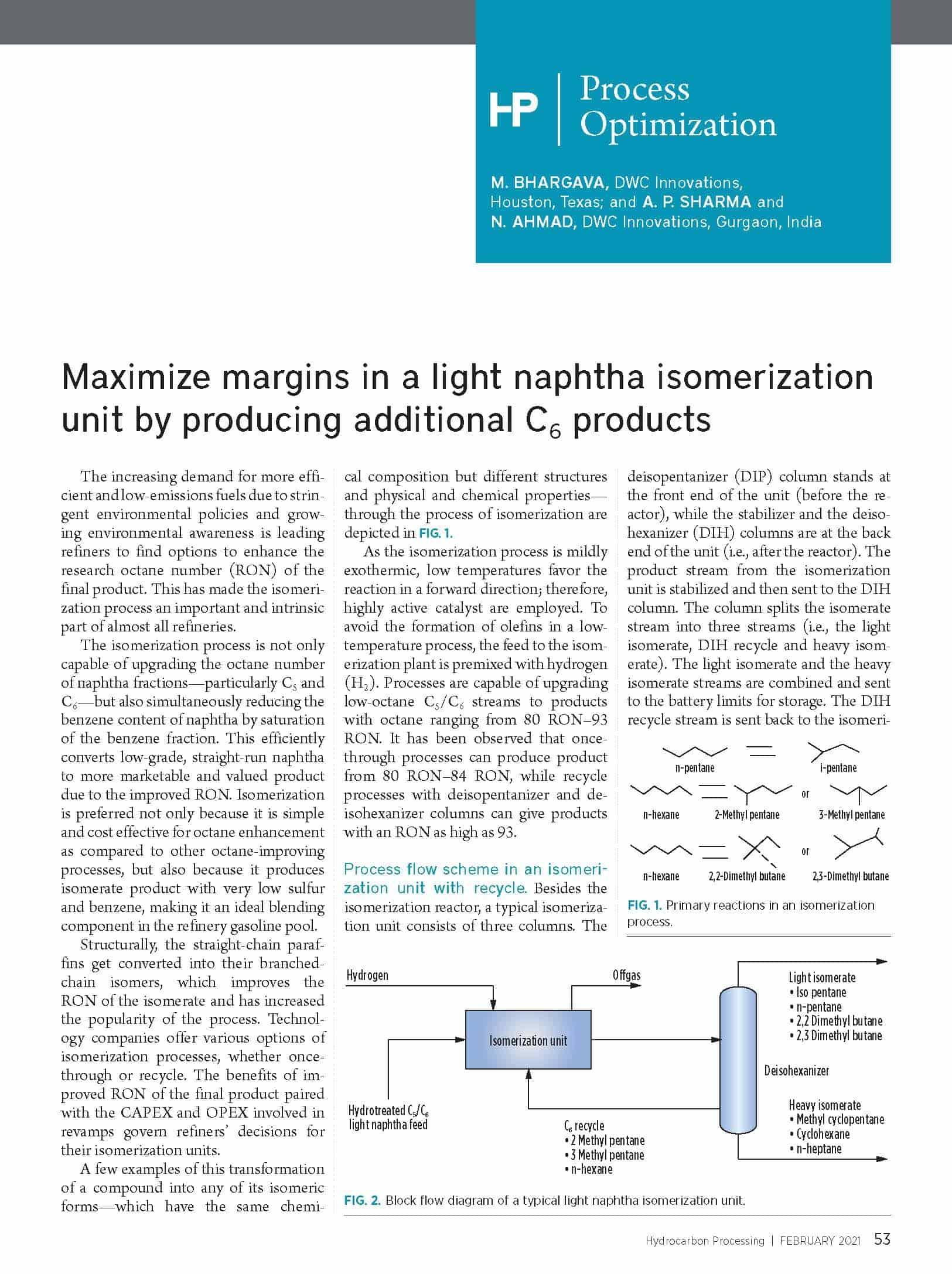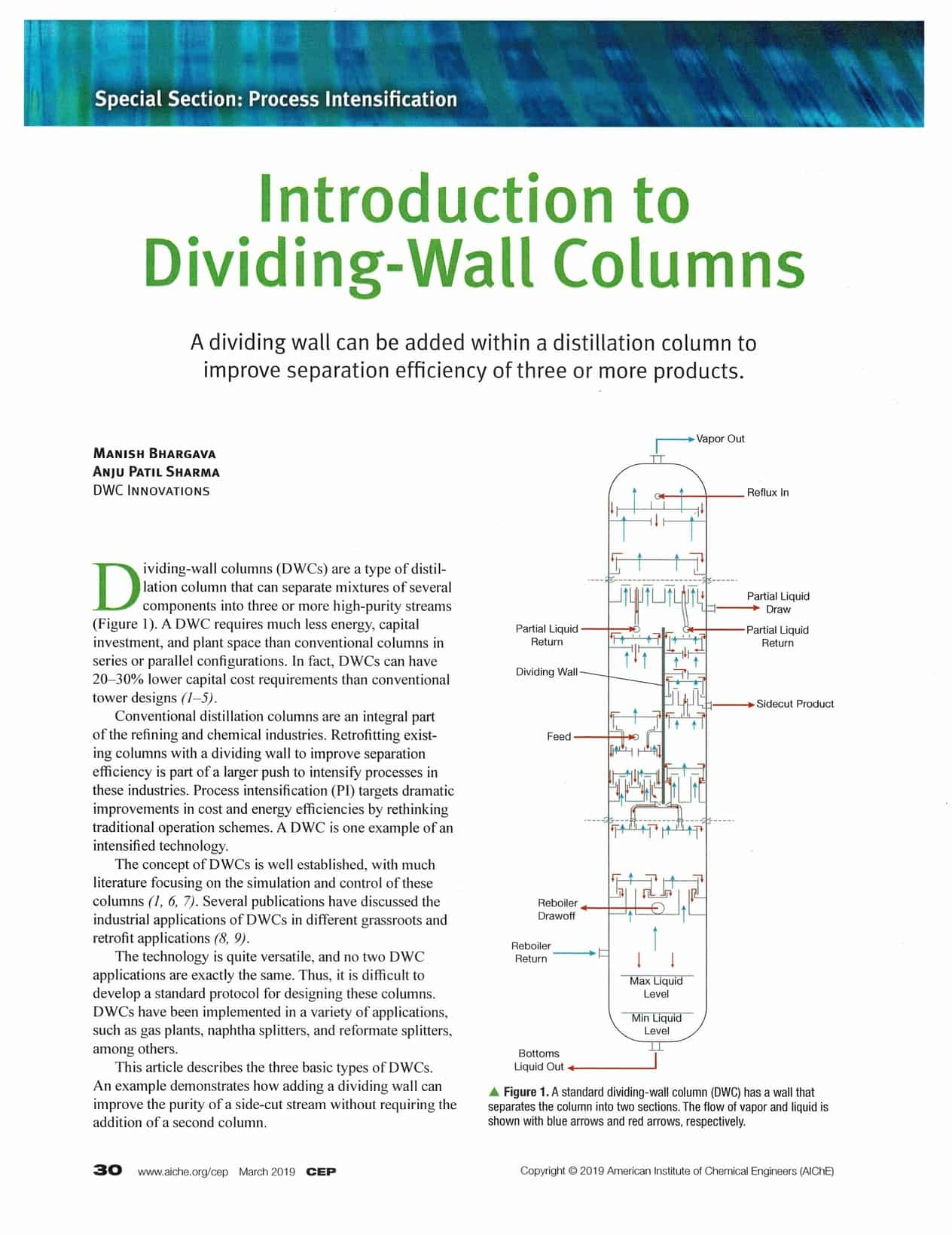The light naphtha isomerization process efficiently converts low grade straight run naphtha components to high RON branched chain components. Typical isomerization units have deisohexanizer column (DIH) that separates light and heavy isomerate along with a side cut recycle stream to the isomerization reactor. The DIH column can be revamped to DWC prime which produces an additional 4th cut of C6 products (Food Grade Hexane/ Polymer grade hexane/ Isohexane /Special boiling point solvents). This revamp not only increases the profitability of Isom unit, but also increases the capacity of Isom unit by more than 20%. Typical revamp payback is 2-12 months.
Read the complete article in Feb 2021 issue of Hydrocarbon Processing.


